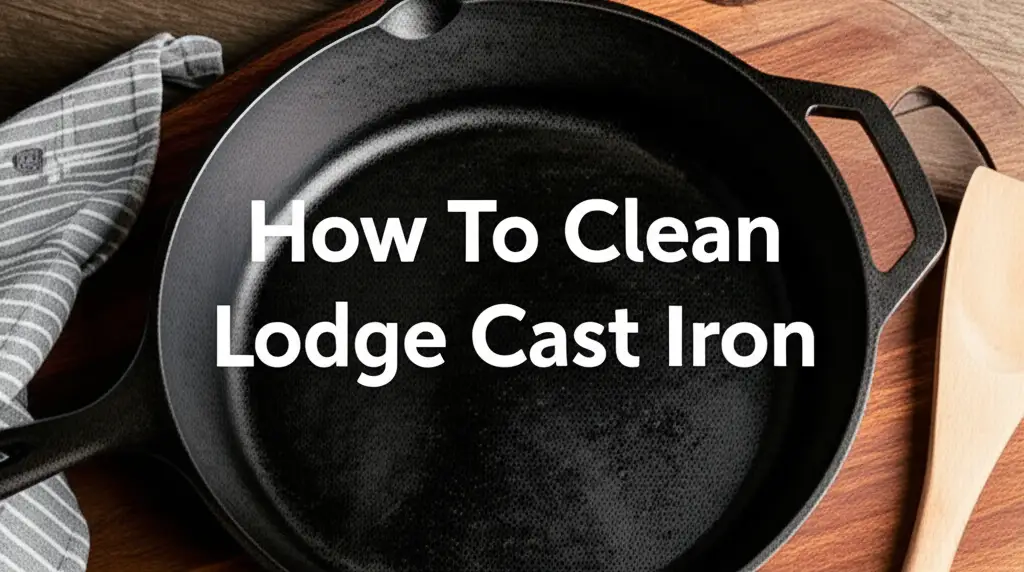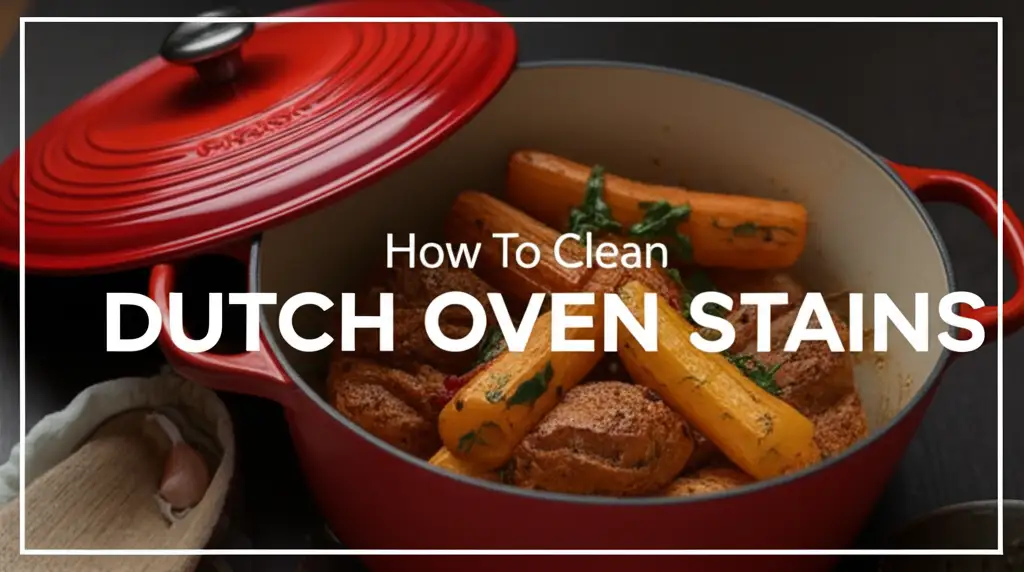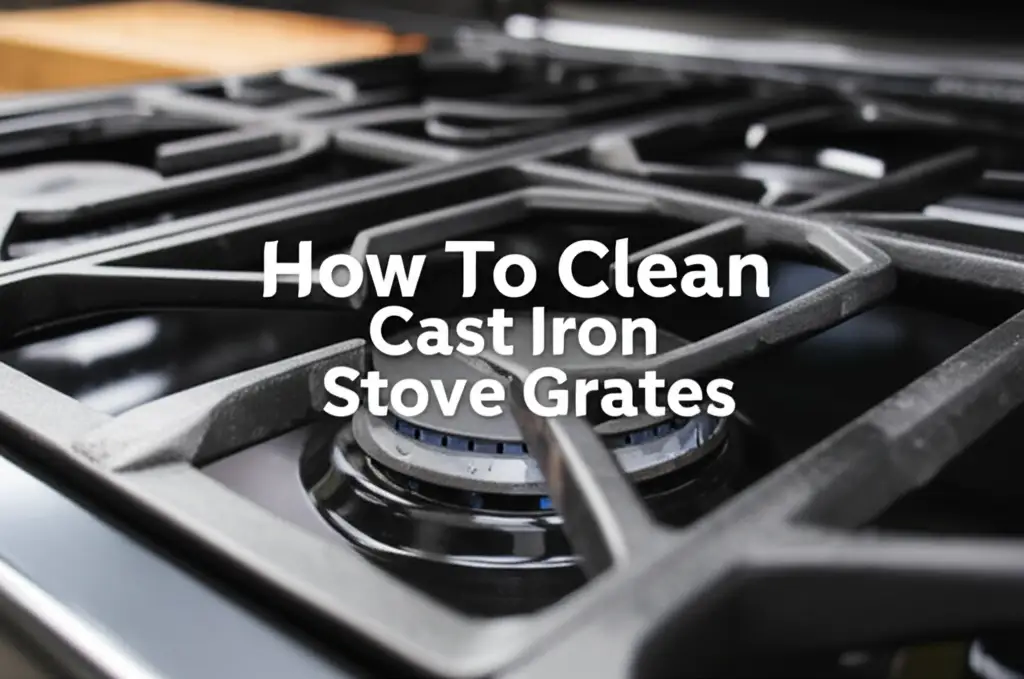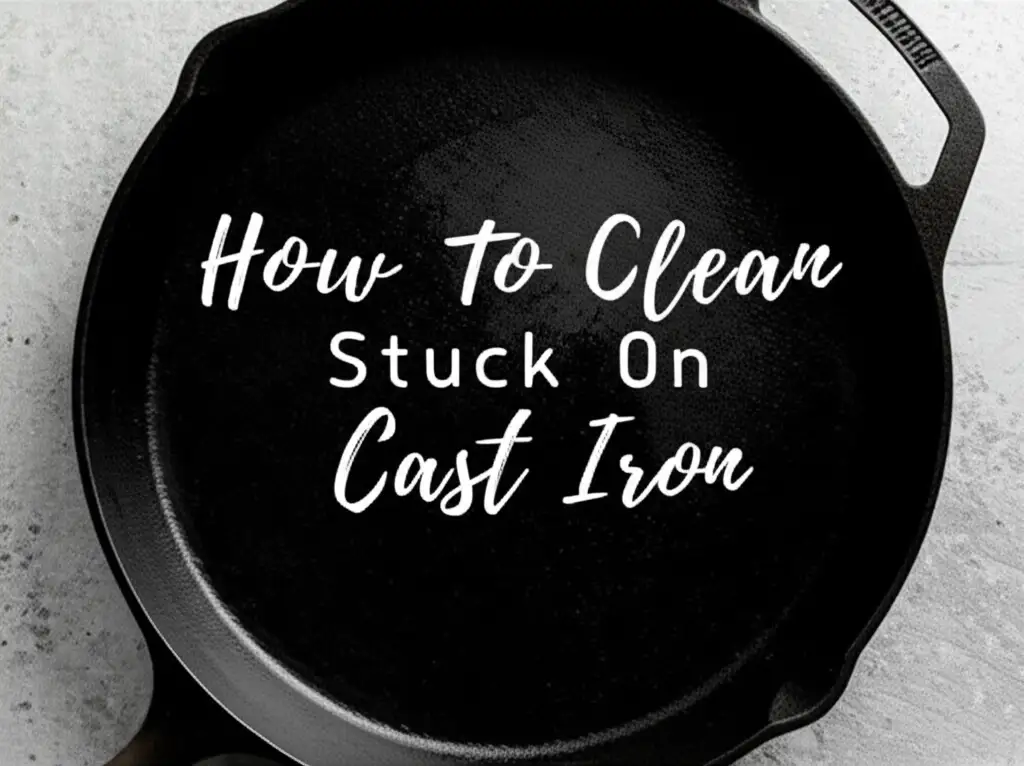· Kitchen Care · 14 min read
How To Clean Crud Off A Cast Iron Skillet
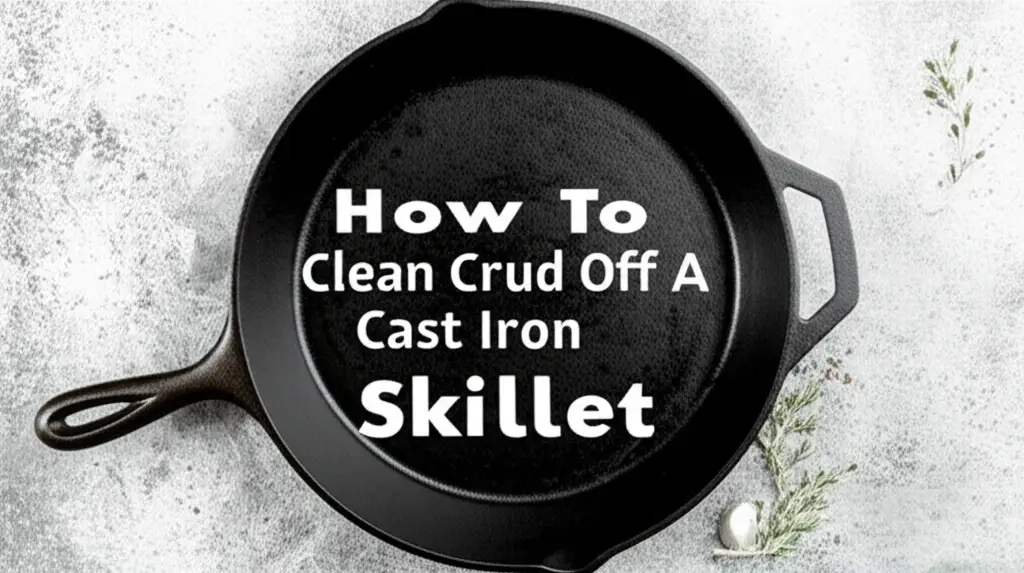
Master Your Skillet: How to Clean Crud Off Your Cast Iron
My cast iron skillet is a treasured kitchen tool. It makes food taste great. However, sometimes crud builds up. This can make cooking less enjoyable. You might see sticky residue or burnt food. This article helps you clean crud off a cast iron skillet. I will share simple, effective ways to restore your pan. We will cover basic cleaning, deep cleaning, and how to keep crud from forming. Get ready to make your cast iron skillet shine again.
Takeaway:
- Address light crud with simple methods like hot water and a scraper.
- Use coarse salt or baking soda paste for stubborn, sticky crud.
- Consider more intensive methods like lye or electrolysis for heavily rusted or thick crud buildup.
- Always re-season your skillet after deep cleaning it.
- Prevent future crud by drying thoroughly and applying a thin oil coat after each use.
How do you clean crud off a cast iron skillet? To clean crud off a cast iron skillet, start with warm water and a pan scraper for light residue. For stubborn spots, use coarse salt and a small amount of oil as an abrasive scrub. Always avoid harsh detergents. Re-season the skillet with a thin layer of oil after cleaning. This keeps the pan protected.
Understanding Crud on Cast Iron Skillets
Crud on a cast iron skillet is common. It forms when food particles, old oil, or carbon residue stick to the surface. This happens over time with regular cooking. Crud often appears as a sticky, black, or brown layer. It can feel rough to the touch. This buildup can affect cooking performance. Food might stick more often. Your skillet might not heat evenly.
A well-seasoned skillet has a smooth, non-stick surface. Crud breaks down this seasoning. It creates an uneven cooking area. This makes it harder to cook food properly. You might notice smoke more often during cooking. The pan can also smell burnt. Removing this crud helps restore your skillet. It brings back its natural non-stick properties. Understanding what crud is helps you clean it properly. It means you choose the right method for the job. We want our cast iron to work its best.
Crud can also be confused with good seasoning. Good seasoning is thin, hard, and uniform. It feels smooth and slick. Crud is thick, uneven, and sticky. It peels or flakes off. It often looks like burnt sugar. A properly seasoned skillet does not have sticky areas. It performs well every time you use it. I know the difference in my own pans. This helps me decide when to clean. We clean our skillets to cook better. We want a perfect cooking surface.
Gentle Methods to Clean Light Crud Off Cast Iron
Sometimes, your cast iron skillet only has light crud. This might be burnt-on food or a slightly sticky spot. You do not need harsh chemicals for this. Simple tools and techniques work best. These methods help preserve your skillet’s seasoning. They keep your pan ready for the next meal. I use these steps often after cooking.
First, try hot water and a pan scraper. After cooking, while the skillet is still warm, add hot water. Let it sit for a few minutes. Use a stiff plastic scraper or a wooden spoon to push off stuck-on food. The warm water softens the crud. This makes it easier to remove. Avoid using cold water on a hot skillet. This can warp the pan. It can also crack it. This method removes most common crud.
Next, consider using coarse salt. Coarse salt acts as a gentle abrasive. Add one or two tablespoons of coarse salt to the skillet. Use a paper towel or a stiff brush to scrub the salt around. The salt helps lift off burnt bits. It also absorbs excess oil. Rinse the skillet with hot water after scrubbing. This simple scrub cleans the surface. It does not strip away good seasoning. I find this method works wonderfully for everyday cleaning. It is quick and effective.
Another good tool is a chainmail scrubber. This scrubber is made of metal rings. It cleans without scratching the seasoning. Pour warm water into the skillet. Gently scrub with the chainmail. The small rings help dislodge stuck-on food. They remove light crud without much effort. Rinse well after scrubbing. These gentle methods keep your cast iron in good shape. They are perfect for maintaining your skillet’s clean surface. You prevent big crud problems later.
Tackling Stubborn Crud on Your Cast Iron Skillet
Sometimes, simple methods are not enough. Your cast iron skillet might have thick, stubborn crud. This requires a bit more effort. These methods are safe for your pan. They remove the sticky, burnt layers effectively. I have used these when a pan needs a deeper clean. They bring life back to a tired skillet.
One effective way is baking soda paste. Baking soda is a mild abrasive. It also helps break down grease. Mix baking soda with a little water to form a thick paste. Apply this paste over the crudded areas. Let it sit for 15-20 minutes. This allows the baking soda to work. Then, scrub with a nylon brush or a stiff sponge. The paste lifts the crud away. Rinse thoroughly with hot water. This method works well for sticky, polymerized oil.
Another option is to use a potato and salt. This might sound strange, but it works. Cut a potato in half. Dip the cut side into coarse salt. Use this potato half to scrub the crudded areas of your skillet. The potato’s starchy moisture helps carry the salt. The salt acts as an abrasive. This combo lifts stubborn bits. It is a natural cleaning method. Rinse the skillet well after scrubbing. This is a unique and satisfying way to clean.
For very tough, localized crud, consider a small amount of mild dish soap. Gasp! Yes, mild dish soap can be used sparingly. Modern dish soaps are not like harsh lye soaps of the past. They will not destroy your seasoning. Add a drop or two of soap to warm water in the skillet. Scrub with a non-abrasive sponge or brush. Rinse quickly and thoroughly. Immediately dry the skillet completely. Follow with a light oil application. This method removes thick grease. It is okay for occasional use.
Deep Cleaning Severely Crudded Cast Iron
Some cast iron skillets need serious help. They might have layers of old, thick crud. They might also have rust. These pans require deep cleaning methods. These methods strip away all old seasoning and crud. You will need to re-season the pan afterwards. This process restores the skillet to bare metal. It brings it back to its original condition. I only use these for very neglected pans.
One powerful method is oven cleaner. Oven cleaner contains lye. Lye breaks down fats and polymerized oils. Spray oven cleaner generously over the entire crudded skillet. Place the skillet in a sealed plastic bag. Let it sit for 12-24 hours. The bag keeps the fumes contained. It also keeps the cleaner from drying out. Wear gloves and eye protection. After soaking, remove the skillet. Scrub it under hot water with a stiff brush or steel wool. All the crud will come off. This leaves bare metal. Rinse completely and dry immediately. This is a very effective way to clean old pans.
Another option is a self-cleaning oven cycle. Place the crudded skillet upside down in your oven. Run the self-cleaning cycle. The extreme heat will turn all organic matter into ash. Be aware: this method creates smoke and odors. It can also sometimes warp very thin skillets. After the cycle, let the oven and skillet cool completely. Brush out the white ash. Your skillet will be bare metal. This method is powerful but has risks. Ensure good ventilation.
For the most extreme cases, electrolysis or lye baths are options. An electrolysis setup uses an electric current. It removes rust and crud. A lye bath involves soaking the skillet in a lye solution. Both methods are highly effective. They require proper safety precautions. These are for serious restoration projects. They completely strip the pan. You must be careful with these chemicals. Always research safety first. These methods return the pan to its original bare iron.
Re-Seasoning Your Cast Iron Skillet After Cleaning
Deep cleaning a cast iron skillet strips away all seasoning. Your pan is now bare metal. This bare metal needs protection. Re-seasoning is very important. It creates a new non-stick layer. It also prevents rust. This step is critical for your skillet’s future use. I never skip this part after a deep clean.
First, ensure the skillet is completely dry. Any moisture will cause rust. You can place the skillet on a stovetop burner for a few minutes. This drives off all water. It also warms the pan. A warm pan helps the oil absorb better. Do not overheat the pan. It should be warm enough to evaporate water. This ensures a dry surface for seasoning.
Next, apply a very thin layer of high smoke point oil. Good oils include grapeseed oil, flaxseed oil, or vegetable oil. Do not use too much oil. Too much oil will result in a sticky surface. Wipe the entire skillet surface. Wipe the inside, outside, and handle. Use a paper towel to wipe off as much oil as possible. The goal is a super thin, almost invisible layer. You want to see no pooling oil.
Now, bake the skillet. Place the skillet upside down in a cold oven. Heat the oven to 450-500°F (230-260°C). Let the skillet bake for one hour. Turn off the oven. Let the skillet cool completely inside the oven. This helps the oil polymerize. It creates a hard, durable layer. Repeat this process three to five times. Each layer builds on the last. This creates a strong, even seasoning. The more layers, the better the non-stick surface. This patient process makes a great cooking surface.
Preventing Future Crud Buildup on Cast Iron
Preventing crud is easier than cleaning it. Good habits keep your cast iron skillet in top condition. These simple steps save you time and effort. I follow these rules after every single use. They ensure my skillet stays ready for cooking. My goal is always to avoid big cleaning jobs.
Always clean your skillet immediately after use. Do not let food sit in it. Food can dry and stick firmly. While the skillet is still warm, use hot water. Scrape off any food residue with a pan scraper. A stiff brush works well too. Avoid soaking your skillet for long periods. Soaking can lead to rust. Quick cleaning is best. This removes food before it hardens.
After cleaning, always dry your skillet completely. Water is the enemy of cast iron. Use a towel to wipe it dry. Then, place the skillet on a stovetop burner over low heat for a few minutes. This heat ensures all moisture evaporates. It prevents rust from forming. A perfectly dry skillet stores well. It prevents any sticky residue. This step is non-negotiable for me.
Finally, apply a very thin layer of cooking oil. After drying, put a few drops of cooking oil in the skillet. Use a paper towel to rub it over the entire cooking surface. Rub the outside and handle too. Wipe off any excess oil. The goal is a barely visible film. This oil layer protects the seasoning. It creates a barrier against moisture. It also helps build more seasoning with each use. This small act makes a big difference. Store your skillet in a dry place. Avoid stacking it with other pans. This protects its seasoned surface. Good prevention means less cleaning.
Common Cast Iron Cleaning Mistakes to Avoid
Caring for cast iron involves knowing what not to do. Many common mistakes can harm your skillet. They can strip seasoning or cause rust. Avoiding these errors keeps your pan in great shape. I learned these lessons over time. Now, I help others avoid them. Knowing what to avoid is as important as knowing what to do.
First, avoid using harsh detergents or steel wool regularly. Many people fear any soap on cast iron. While mild soap is okay sometimes, strong detergents can strip your hard-earned seasoning. Steel wool is too abrasive. It can scratch the surface. This removes the polymerized oil layers. Use softer scrubbing tools. Think about nylon brushes or chainmail scrubbers. They clean effectively without damage. Preserve your seasoning.
Never put your cast iron skillet in the dishwasher. Dishwashers use harsh detergents. They also expose the pan to prolonged moisture. Both of these are very bad for cast iron. Dishwasher cycles will strip the seasoning completely. They will also cause rust quickly. Always hand wash your cast iron. It takes only a few minutes. Hand washing is the only safe way.
Do not let your cast iron air dry. Air drying leaves water on the surface. This water will quickly cause rust. Rust is a pain to remove. Always towel dry your skillet immediately after washing. Then, place it on the stove over low heat. This ensures complete dryness. It prevents any rust spots from forming. Proper drying is crucial.
Lastly, avoid storing your skillet when it is wet or dirty. Storing a wet skillet leads to rust. Storing a dirty skillet can attract pests. It also makes crud harder to remove later. Always ensure your skillet is clean, dry, and lightly oiled before putting it away. This simple habit protects your pan. It makes sure it is ready for your next cooking adventure. These mistakes are easy to avoid. They lead to a long life for your cast iron.
FAQ Section
Can I use soap to clean my cast iron skillet?
Yes, you can use a small amount of mild dish soap occasionally. Modern dish soaps are not like the harsh lye soaps of the past. They will not destroy your skillet’s seasoning if used sparingly. Always rinse quickly and thoroughly. Then, dry the skillet immediately. This prevents any damage.
How do I remove rust from my cast iron skillet?
To remove rust, scrub the affected area with steel wool or a stiff brush. Use warm water and a small amount of mild soap. You can also use a paste of baking soda and water. After scrubbing off the rust, dry the skillet completely. Immediately re-season the pan. This protects it from future rust.
What is the best oil for seasoning cast iron?
High smoke point oils work best for seasoning. Good options include grapeseed oil, flaxseed oil, and vegetable oil. These oils polymerize well. This means they form a hard, non-stick layer. Use only a very thin layer for each seasoning coat. This prevents sticky residue.
How often should I re-season my cast iron skillet?
You should re-season your cast iron skillet after any deep cleaning. This includes rust removal or crud stripping. For regular use, apply a very thin layer of oil after each wash and heat dry. This simple habit slowly builds and maintains the seasoning. It keeps your pan performing well.
Can I clean cast iron in a self-cleaning oven?
You can use a self-cleaning oven cycle for heavily cruded or rusted cast iron. The extreme heat will turn crud and rust into ash. Be aware that this process creates smoke and strong odors. It also carries a small risk of warping the skillet. Always ensure good ventilation.
What causes sticky residue on cast iron after cleaning?
Sticky residue often comes from using too much oil during seasoning. It can also happen if the oil does not reach a high enough temperature to fully polymerize. To fix this, heat the skillet on the stovetop until the residue burns off. Let it cool. Then, apply a much thinner layer of oil and re-bake.
Conclusion
Cleaning crud off a cast iron skillet might seem daunting at first. However, with the right knowledge and tools, it becomes simple. We have explored various methods to clean crud off a cast iron skillet. We covered everything from gentle daily care to deep cleaning for stubborn buildup. Remember to always dry your skillet completely. Always apply a thin layer of oil after each use. This protects your pan.
Proper cast iron care ensures its longevity. It also improves your cooking experience. A well-maintained cast iron skillet performs beautifully. It provides a natural non-stick surface. It heats evenly. I encourage you to apply these tips. You will enjoy a clean, seasoned cast iron skillet for many years. Start today. Give your cast iron the care it deserves. Your cooking will thank you.
- cast iron cleaning
- clean cast iron skillet
- remove crud cast iron
- cast iron care
- seasoning cast iron

